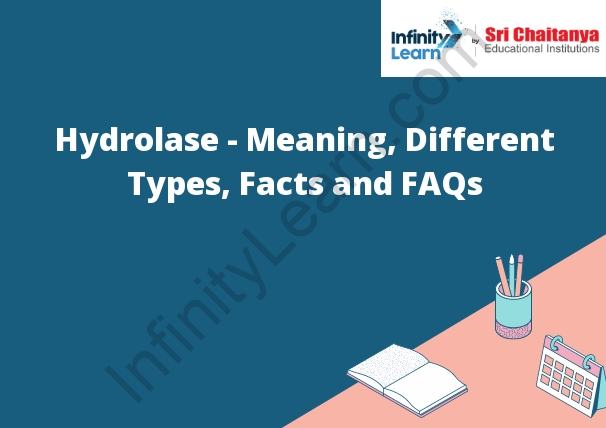Table of Contents
What is Hydrolase? ; Acid Hydrolases
Hydrolases are a family of enzymes that catalyze the hydrolysis of various bonds in a molecule. Acid hydrolases are a subset of hydrolases that catalyze the hydrolysis of carbon-oxygen and carbon-nitrogen bonds in acidic compounds.

Glycoside Hydrolase
Family 13
Glycoside hydrolase family 13 (GH13) is a family of enzymes that catalyze the hydrolysis of a variety of glycoconjugates. These enzymes are found in a wide range of organisms, including bacteria, archaea, plants, and animals. The family includes both endoglycosidases, which cleave the glycosidic bond within the carbohydrate molecule, and exoglycosidases, which cleave the glycosidic bond at the terminus of the carbohydrate molecule.
Epoxide Hydrolase
Epoxide hydrolase (EH) is a family of enzymes that catalyzes the hydrolysis of epoxides to their corresponding alcohols. Epoxides are a class of reactive oxygen species that are produced as byproducts of various chemical reactions. EHs are found in a variety of organisms, including plants, animals, and microorganisms. The enzymes play a critical role in the metabolism of a variety of compounds, including toxins, drugs, and carcinogens.
Lysosomal Hydrolase
Lysosomes are organelles in the cell that are responsible for the degradation of macromolecules. The lysosomal hydrolases are the enzymes that degrade these macromolecules. The lysosomal hydrolases are found in the lysosomes and are responsible for the degradation of proteins, lipids, and nucleic acids.
Serine Hydrolase
K01592 448 814 ( -) 191 0.362 443 <-> 1 pfs:PFLU_4165 serine hydrolase K01592 448 814 ( -) 191 0.362 443 <-> 1 pfw:PF1751_v1c41450 serine hydrolase K01592 448 814 ( -) 191 0.362 443 <-> 1 pphr:APZ00_04860 serine hydrolase K01592 448 814 ( -) 191 0.362 443 <-> 1 pspi:PS2015_2699 Serine hydrolase K01592 448 814 ( -) 191 0.362 443 <-> 1 psu:Psesu_4269 serine hydrolase K01592 448 814 ( -) 191 0.362 443 <-> 1 smaf:D781_2712 putative serine hydrolase K01592 448 814 ( -) 191 0.362 443 <-> 1 smar:SM39_2915 putative serine hydrolase K01592 448 814 ( -) 191 0.362 443 <-> 1 sphp:LH20_02910 serine hydrolase K01592 449 814 ( -) 191 0.362 443 <-> 1 spiu:SPICUR_02730 serine hydrolase K01592 448 814 ( -) 191 0.362 443
Cholesterol Ester Hydrolase
The enzyme cholesterol ester hydrolase (CEH) catalyzes the hydrolysis of cholesterol esters to cholesterol and fatty acids. CEH is a key enzyme in the metabolism of cholesterol and is expressed in a number of tissues including the liver, intestine, and adipose tissue. The liver is the primary site of CEH activity, and the majority of the cholesterol in the body is in the form of cholesterol esters.
The activity of CEH can be regulated by a number of factors including hormones, dietary lipids, and inflammation. For example, the level of CEH activity is increased in response to high levels of cholesterol in the diet. This increase in CEH activity helps to remove excess cholesterol from the body.
CEH is also involved in the absorption of dietary cholesterol. The fatty acids produced by CEH are absorbed into the intestinal cells, and the cholesterol is transported across the cell membrane and into the bloodstream.
CEH is also expressed in adipose tissue, where it plays a role in the breakdown of triglycerides. The fatty acids produced by CEH are used as energy by the cells, and the cholesterol is transported to the liver for metabolism.
Bile Salt Hydrolase
K01695 479 586 ( -) 139 0.281 471 -> 1 cput:CONPUDRAFT_162714 bile salt hydrolase K01695 479 586 ( -) 139 0.281 471 -> 1 mey:TM49_01145 bile salt hydrolase K01695 479 586 ( -) 139 0.281 471 -> 1 cnc:CNE_1c35960 bile salt hydrolase BshA K01695 479 585 ( -) 139 0.281 471 -> 1 cwo:Cwoe_4272 bile salt hydrolase K01695 480 585 ( -) 139 0.269 480 -> 1 cih:ATE47_02340 bile salt hydrolase K01695 479 584 ( -) 139 0.281 471 -> 1 cij:WG74_14655 bile salt hydrolase K01695 479 584 ( -) 139 0.281 471 -> 1 cgt:cgR_2712 hypothetical protein K01695 479 583 ( -) 139 0.269 480 -> 1 cgc:Cyagr_3290 bile salt hydrolase K01695 479 582 ( -) 139 0.269 480 -> 1 csg:Cylst_4609 bile salt hydrolase K01695 480 581 (
Soluble Epoxide Hydrolase
Inhibitors
Soluble epoxide hydrolase inhibitors are a class of drugs that block the activity of soluble epoxide hydrolase (sEH), an enzyme that breaks down epoxides into their component parts. By blocking the activity of sEH, these drugs prevent the breakdown of epoxides, which can lead to the accumulation of these compounds in the body. This can have a variety of effects, including the inhibition of inflammation, the suppression of the immune system, and the prevention of blood clotting.
Soluble epoxide hydrolase inhibitors are currently being investigated as potential treatments for a variety of conditions, including asthma, arthritis, and heart disease.
Alpha Beta Hydrolase
Definition
An enzyme that catalyzes the hydrolysis of a peptide bond in a protein.
Nudix Hydrolase
6
Nudix hydrolase 6 is a protein that in humans is encoded by the NUDT6 gene.
Bleomycin Hydrolase
The enzyme acts on the antibiotic bleomycin to cleave the molecule into two fragments, bleomycin A2 and bleomycin B2.








